Home>Garden Essentials>What Industry Is Landscaping In
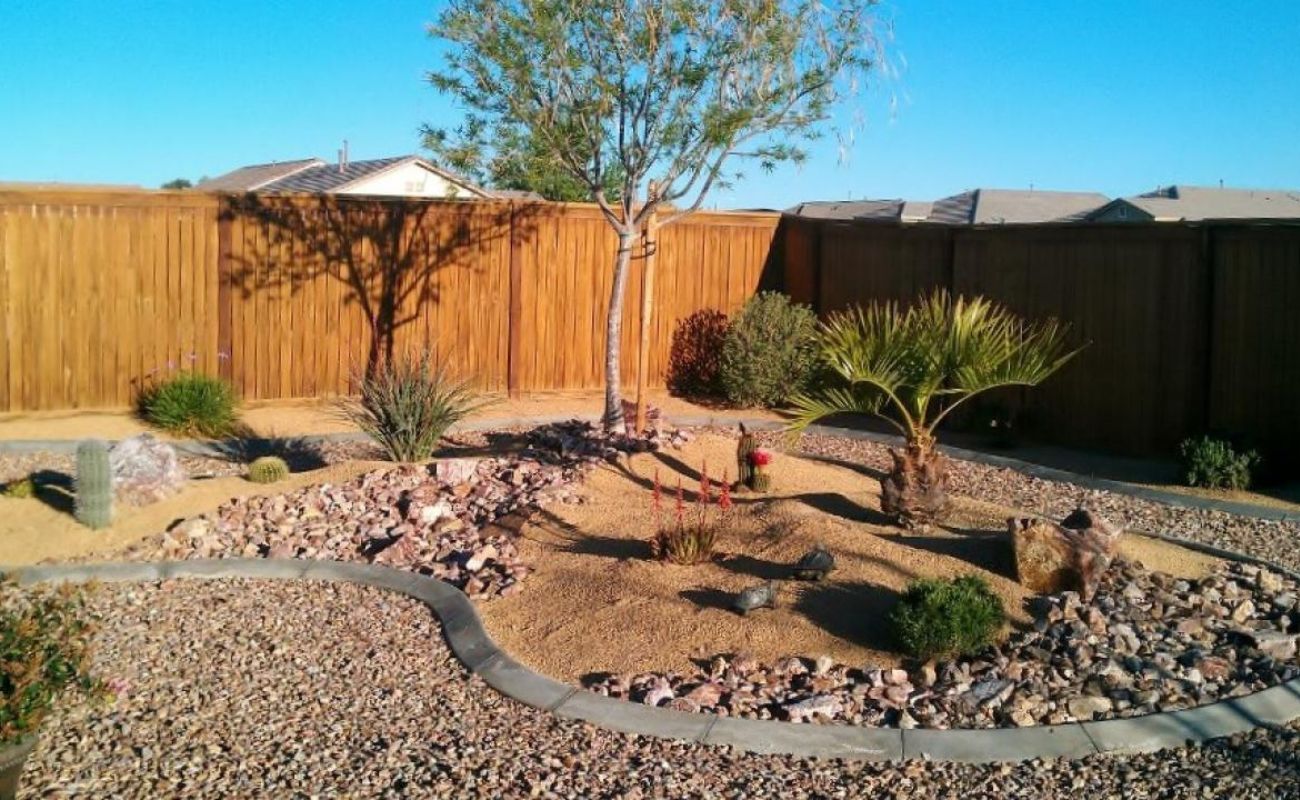

Garden Essentials
What Industry Is Landscaping In
Modified: October 20, 2024
Looking for information on what industry landscaping falls under? Discover the ins and outs of the garden industry and learn about the role of landscaping in creating beautiful outdoor spaces.
(Many of the links in this article redirect to a specific reviewed product. Your purchase of these products through affiliate links helps to generate commission for Storables.com, at no extra cost. Learn more)
Introduction
Welcome to the wonderful world of landscaping! Whether you have a small vacant backyard or a sprawling commercial property, landscaping plays a crucial role in creating a visually appealing and functional outdoor space. It involves the art and science of transforming ordinary landscapes into stunning and functional areas that inspire and engage.
Landscaping is a multidimensional field that encompasses a wide range of activities, from designing and installing gardens to maintaining and caring for them. It combines elements of artistry, horticulture, and environmental consciousness to create harmonious and sustainable outdoor environments.
In this article, we will delve into the world of landscaping and explore its many facets, from the different types of landscaping to the job opportunities it offers. So, let’s grab our gardening gloves and dig deep into the world of landscaping!
Key Takeaways:
- Landscaping involves planning, designing, and maintaining outdoor spaces to enhance beauty, functionality, and environmental sustainability, offering diverse job opportunities in horticulture, design, and environmental stewardship.
- By prioritizing water conservation, soil health, and biodiversity preservation, landscaping professionals and homeowners can create sustainable and visually captivating outdoor spaces that contribute to a healthier planet.
Read more: What Type Of Industry Is Construction
Definition of Landscaping
Landscaping refers to the process of planning, designing, creating, and maintaining outdoor spaces with the goal of enhancing their aesthetic appeal, functionality, and environmental sustainability. It involves the use of various elements, such as plants, trees, flowers, hardscape features, and architectural elements, to transform ordinary outdoor areas into visually captivating and usable spaces.
One of the key aspects of landscaping is the careful consideration of the natural features and characteristics of a particular site. Landscapers analyze the terrain, soil composition, climate conditions, and available resources to develop a plan that maximizes the potential of the space while minimizing any negative environmental impact.
The process of landscaping typically begins with a thorough assessment of the site and a detailed consultation with the client. During this stage, landscapers gain an understanding of the client’s preferences, budget, and desired outcomes. They then proceed to create a comprehensive design that incorporates the client’s vision while taking into account the site’s constraints and opportunities.
Once the design is finalized, the implementation stage begins. This involves excavation, grading, planting, construction of hardscape features (such as pathways, patios, and retaining walls), installation of irrigation systems, and other necessary tasks to bring the design to life. Attention to detail and skilled craftsmanship are essential during this stage to ensure the successful execution of the landscaping plan.
After the initial installation, ongoing maintenance is crucial to keep the landscape healthy and vibrant. This includes tasks like regular pruning, fertilizing, watering, and pest control, along with periodic adjustments and enhancements to maintain the desired aesthetic and functionality of the outdoor space.
Overall, landscaping is a collaborative process that combines artistic vision, technical skills, and environmental stewardship to create outdoor environments that not only captivate the eye but also offer a sanctuary for relaxation, recreation, and connection with nature.
Importance of Landscaping
Landscaping plays a vital role in our lives, offering numerous benefits that extend beyond mere aesthetics. Here are some of the key reasons why landscaping is important:
- Enhanced Curb Appeal: A well-designed and maintained landscape can greatly enhance the curb appeal of any property. It creates a positive first impression and increases the value of the property. Whether it’s a residential home or a commercial establishment, an attractive landscape can make a significant difference in attracting attention and creating a welcoming ambiance.
- Improved Quality of Life: Landscaping provides us with a natural environment that enhances our well-being. Being surrounded by lush greens, colorful flowers, and calming elements such as water features or shade trees can have a positive impact on our mental and emotional state. It provides a peaceful sanctuary where we can relax, rejuvenate, and connect with nature.
- Environmental Benefits: Landscaping plays a crucial role in enhancing the environment. It helps to improve air quality by reducing air pollution through the absorption of carbon dioxide and other harmful pollutants. Plants and trees act as natural filters, purifying the air we breathe. Additionally, a well-designed landscape can minimize soil erosion, conserve water, and provide a habitat for birds, butterflies, and other wildlife.
- Energy Efficiency: Strategic placement of trees, shrubs, and other landscaping elements can contribute to energy efficiency. For example, shading windows and walls with trees can help reduce heat gain during the summer months, thus lowering the need for air conditioning. This can result in significant energy savings and reduce the carbon footprint of a property.
- Increased Productivity: When it comes to commercial landscaping, studies have shown that well-maintained outdoor spaces can improve the productivity and well-being of employees. Access to nature and green spaces has been linked to reduced stress levels, increased focus, and enhanced job satisfaction. This translates into a healthier and more productive workforce.
- Social and Community Benefits: Landscaping fosters a sense of community and social interaction. Public parks, gardens, and green spaces provide gathering places for people to connect, play, and engage in recreational activities. They create opportunities for socializing, community events, and promoting a sense of belonging and pride within a neighborhood.
With these numerous benefits, it is clear that landscaping is not just about creating visually appealing landscapes but also about nurturing the environment, enhancing our well-being, and fostering a sense of community. It is a valuable investment that pays off in many ways, bringing beauty, functionality, and harmony to our outdoor spaces.
Types of Landscaping
Landscaping is a diverse field with various specialized areas, each catering to unique requirements and preferences. Here are some of the common types of landscaping:
- Residential Landscaping: Residential landscaping focuses on enhancing the outdoor spaces of homes, whether it’s a small backyard or a sprawling estate. It includes designing and creating gardens, patios, walkways, outdoor living areas, and play spaces. The goal is to create a visually appealing and functional landscape that complements the architectural style of the home and meets the specific needs and desires of the homeowners.
- Commercial Landscaping: Commercial landscaping involves designing and maintaining outdoor spaces for commercial properties such as office buildings, retail centers, hotels, and restaurants. It aims to create an inviting and professional image that reflects the brand and enhances the customer experience. Commercial landscaping often includes features like entrance enhancements, parking lot design, signage, and outdoor seating areas.
- Industrial Landscaping: Industrial landscaping focuses on large-scale properties such as industrial parks, factories, and warehouses. It often involves extensive landscaping to soften the industrial aesthetics, improve the site’s functionality, and meet environmental regulations. Industrial landscaping may include erosion control measures, stormwater management systems, tree planting, and the integration of green spaces for employee well-being.
- Public Landscaping: Public landscaping refers to the design and maintenance of outdoor spaces available to the general public. This includes public parks, botanical gardens, recreational areas, and streetscapes. The goal is to create welcoming and inclusive spaces that promote community engagement and provide recreational opportunities for residents and visitors alike.
- Institutional Landscaping: Institutional landscaping is focused on educational campuses, healthcare facilities, and government institutions. The aim is to create aesthetically pleasing and functional outdoor environments that support the specific needs of the institution. This may involve designing outdoor classrooms, healing gardens, athletic fields, and accessible pathways.
- Sustainable Landscaping: Sustainable landscaping, also known as eco-friendly or green landscaping, emphasizes environmentally conscious practices. It involves utilizing native plants, optimizing water usage through efficient irrigation systems, incorporating renewable materials, and minimizing chemical use. The goal is to create landscapes that contribute to biodiversity conservation, reduce water consumption, and promote ecological balance.
These are just a few examples of the types of landscaping that exist. Each type requires specialized knowledge and skills to cater to the unique needs and goals of the specific project. Whether it’s a small residential yard or a vast commercial property, landscaping professionals can create customized outdoor spaces that bring beauty, functionality, and enjoyment to various settings.
Residential Landscaping
Residential landscaping focuses on the design, installation, and maintenance of outdoor spaces for homes. Whether you have a small urban backyard or a sprawling suburban property, residential landscaping can transform your outdoor area into a beautiful and functional extension of your living space. Here are some key aspects to consider in residential landscaping:
- Garden Design: Creating a well-designed garden is at the heart of residential landscaping. This involves careful planning and consideration of factors such as the size and shape of the space, sun exposure, soil conditions, and the desired aesthetic. The garden design may include elements such as flower beds, shrubs, trees, ornamental grasses, and seasonal color displays. It can also incorporate features like pathways, seating areas, and water features to enhance the overall ambiance.
- Hardscape Features: In addition to plants and greenery, residential landscaping often includes hardscape features that serve both functional and aesthetic purposes. This can include the installation of patios, decks, outdoor kitchens, fire pits, retaining walls, and walkways. Hardscape features provide defined spaces for entertainment, relaxation, and outdoor activities, adding value to your property.
- Lawn Care: Maintaining a healthy and vibrant lawn is an essential part of residential landscaping. This involves regular mowing, fertilizing, aerating, and overseeding to keep the grass lush and green. Lawn care also includes weed control, irrigation management, and proper drainage to ensure optimal growth and minimize the risk of pests and diseases.
- Outdoor Living Spaces: Residential landscaping can create inviting outdoor living spaces that allow homeowners to relax and entertain outdoors. This can involve the installation of patios or decks with comfortable seating areas, shade structures, outdoor lighting, and even outdoor kitchens or fireplaces. Outdoor living spaces provide a seamless transition from indoor to outdoor living, maximizing the enjoyment of your property.
- Water Features: Adding a water feature such as a fountain, pond, or waterfall can bring a sense of tranquility and visual interest to a residential landscape. The soothing sound of running water and the presence of aquatic plants can create a peaceful ambiance and attract birds and wildlife. Water features also act as focal points, adding beauty and elegance to your outdoor space.
- Sustainable Practices: Many homeowners are now embracing sustainable landscaping practices to minimize their environmental impact. This can involve the use of native or drought-tolerant plants, smart irrigation systems, rainwater harvesting, and the integration of composting or organic gardening techniques. Sustainable residential landscaping not only conserves resources but also promotes biodiversity and creates a healthier ecosystem.
Residential landscaping is a collaborative process that involves working closely with landscaping professionals to bring your vision to life. The goal is to create a harmonious and personalized outdoor space that reflects your lifestyle, meets your needs, and enhances the overall aesthetic and value of your property. Whether you desire a serene garden retreat, a vibrant play area for children, or an entertainment oasis, residential landscaping can transform your outdoor environment into a haven that you and your family can enjoy for years to come.
Landscaping is part of the service industry, specifically within the environmental and horticultural sector. It involves designing, installing, and maintaining outdoor spaces such as gardens, parks, and commercial properties.
Read more: What Is The Future Of Construction Industry
Commercial Landscaping
Commercial landscaping focuses on the design, installation, and maintenance of outdoor spaces for commercial properties such as office buildings, retail centers, hotels, and restaurants. It is an essential aspect of creating a positive and inviting first impression for customers, clients, and employees. Commercial landscaping goes beyond aesthetics and encompasses both functional and branding considerations. Here are some key elements of commercial landscaping:
- Entrance Enhancements: The entrance of a commercial property serves as the first point of contact for visitors. It is crucial to create an inviting and visually appealing entrance that reflects the brand identity of the business. This can include features such as well-maintained flower beds, ornamental trees, signage, and welcoming pathways to guide customers and employees into the building.
- Parking Lot Design: Commercial landscaping extends to the design and layout of parking areas. Effective parking lot design ensures maximum utilization of space, ease of access, and clear traffic flow. It involves planning for appropriate lighting, signage, and landscaping elements to enhance safety, as well as incorporating green spaces and shade trees to improve aesthetics and mitigate the heat island effect.
- Outdoor Seating Areas: Many commercial establishments, such as restaurants and cafes, can benefit from well-designed outdoor seating areas. These spaces provide customers with an opportunity to enjoy open-air dining or socializing. Commercial landscaping can incorporate features like comfortable seating arrangements, umbrellas or shade structures, and attractive landscaping elements to create a pleasant and inviting atmosphere.
- Wayfinding and Signage: Clear and well-placed signage is essential for directing visitors to different areas within a commercial property. Commercial landscaping includes planning for wayfinding signage that is aesthetically consistent with the overall design. It ensures that visitors can easily navigate the outdoor space and find their intended destination, whether it’s a specific building, parking area, or other facilities.
- Seasonal Displays: Commercial landscaping often incorporates seasonal flower displays or plant arrangements to add color and visual interest. This can include flowering plants, hanging baskets, and decorative containers that are changed with the seasons. Seasonal displays not only enhance the appearance of the property but also create a sense of freshness and vibrancy throughout the year.
- Sustainability and Low Maintenance: Many commercial properties are now embracing sustainable landscaping practices to reduce water consumption, energy usage, and maintenance costs. This can involve the use of native or drought-tolerant plants, efficient irrigation systems, and environmentally friendly maintenance practices. Sustainable commercial landscaping not only demonstrates a commitment to environmental stewardship but also reduces long-term expenses and enhances the overall image of the property.
Commercial landscaping requires careful planning and consideration of the specific needs and goals of the business. Collaborating with experienced landscaping professionals can help ensure that the outdoor space aligns with the branding strategy, provides a welcoming environment for customers and employees, and contributes to the overall success of the commercial property. With thoughtful design and ongoing maintenance, commercial landscaping can create a positive and lasting impression that sets a business apart from the competition.
Industrial Landscaping
Industrial landscaping focuses on creating visually appealing and environmentally sustainable outdoor spaces for industrial properties such as industrial parks, factories, warehouses, and manufacturing facilities. The primary goal of industrial landscaping is to soften the industrial aesthetics and ensure that the landscape complements the overall site functionality. Here are some key aspects of industrial landscaping:
- Erosion Control: Industrial sites often have large areas of exposed soil, which can be prone to erosion. Industrial landscaping includes implementing erosion control measures such as installing retaining walls, terracing slopes, and stabilizing soil with erosion control blankets or matting. These measures help prevent soil erosion, preserve site stability, and minimize sediment runoff into nearby water bodies.
- Stormwater Management: Industrial landscaping incorporates stormwater management systems to mitigate the impact of heavy rainfall. This can involve the installation of swales, bioswales, or rain gardens that capture and filter stormwater runoff, reducing the strain on local sewers and preventing pollution of nearby water bodies. Stormwater management also helps replenish groundwater and promotes the natural water cycle.
- Tree Planting and Green Spaces: Industrial landscaping includes the strategic planting of trees and the integration of green spaces within the site. Trees provide shade and cooling effects, improve air quality, and create a more pleasant working environment for employees. Green spaces can include grassy areas, biofiltration zones, or even recreational spaces where employees can relax and unwind during breaks.
- Vegetation for Noise and Dust Reduction: Industrial sites are often associated with noise and dust. Industrial landscaping can incorporate the strategic planting of vegetation as natural barriers or sound absorbers to reduce noise pollution and enhance the site’s acoustic environment. Similarly, certain plant species can act as dust filters, trapping airborne particles and improving air quality within the industrial site.
- Safety and Accessibility: Industrial landscaping plays a role in enhancing safety and accessibility within the site. This can include the installation of proper lighting, clear signage, and well-maintained walkways to ensure safe pedestrian movement. Additionally, landscaping features such as bollards, barriers, and markings can delineate vehicle traffic routes and ensure the smooth flow of operations within the industrial facility.
- Environmental Compliance: Industrial landscaping ensures that the site meets relevant environmental regulations and requirements. This may involve incorporating indigenous plant species, managing invasive plants, minimizing the use of water and chemicals, and adhering to local codes for landscaping activities. Industrial landscaping professionals work closely with environmental agencies to ensure that the site is in compliance with applicable laws and guidelines.
Industrial landscaping requires a comprehensive understanding of both the industrial processes taking place on the site and the specific environmental challenges associated with it. By integrating sustainable landscaping practices and environmentally conscious design, industrial landscaping aims to create harmonious and functional outdoor spaces that mitigate the environmental impact of industrial activities and promote a healthier working environment.
Environmental Concerns in Landscaping
Landscaping, while enhancing the beauty and functionality of outdoor spaces, also raises various environmental concerns. As we strive to create sustainable and ecologically responsible landscapes, it is essential to address these concerns and adopt practices that minimize negative impacts. Here are some of the key environmental concerns in landscaping:
- Water Conservation: Water scarcity is a pressing issue in many regions, making water conservation a top priority in landscaping. Excessive irrigation can lead to water waste and can also contribute to water pollution through runoff. Sustainable landscaping practices, such as using native and drought-tolerant plants, optimizing irrigation systems, and implementing rainwater harvesting techniques, can significantly reduce water consumption while maintaining healthy landscapes.
- Soil Health and Erosion Control: Healthy soil is the foundation of a vibrant landscape. However, poor soil management practices, such as excessive compaction, overuse of chemical fertilizers, or improper grading, can lead to soil degradation and erosion. Sustainable landscaping focuses on practices that enhance soil health, such as incorporating organic matter, using mulch, and implementing erosion control measures to prevent sediment runoff and preserve soil fertility.
- Chemical Use and Pollution: Excessive use of pesticides, herbicides, and synthetic fertilizers can have detrimental effects on both human health and the environment. These chemicals can contaminate soil, water bodies, and harm beneficial insects and wildlife. Environmentally responsible landscaping emphasizes the use of organic or low-toxicity alternatives and integrated pest management strategies to minimize chemical use and promote a healthy ecosystem.
- Biodiversity Conservation: Landscaping can play a significant role in preserving and enhancing biodiversity. It involves selecting native plant species, which provide habitat for local wildlife and contribute to regional biodiversity. Creating diverse plant communities, incorporating pollinator-friendly plants, and avoiding the use of invasive plant species are all ways to support and promote local ecosystems.
- Energy Consumption: Landscaping choices can impact energy consumption. For instance, strategic placement of trees and shrubs can provide shade, reducing the need for air conditioning and energy consumption during hot summer months. Additionally, using energy-efficient outdoor lighting and incorporating green roofs or green walls can further reduce energy usage and contribute to a more sustainable landscape.
- Waste Management: Proper waste management is a vital aspect of sustainable landscaping. This includes recycling green waste, composting organic materials, and responsibly disposing of construction debris and other waste. Recycling and reusing materials, such as mulch or salvaged building materials, can reduce landfill waste, conserve resources, and minimize the carbon footprint of landscaping projects.
Addressing these environmental concerns requires a commitment to sustainable landscaping practices. By prioritizing water conservation, soil health, biodiversity preservation, chemical reduction, energy efficiency, and waste management, landscaping professionals and homeowners can create beautiful outdoor spaces while minimizing environmental impacts. Taking an eco-friendly approach to landscaping not only benefits the environment but also contributes to our well-being and the long-term sustainability of our landscapes.
Job Opportunities in the Landscaping Industry
The landscaping industry offers a diverse range of job opportunities for individuals interested in horticulture, design, construction, and environmental stewardship. As the demand for aesthetically pleasing, sustainable, and functional outdoor spaces continues to grow, so does the need for skilled professionals in the field. Here are some of the job opportunities available in the landscaping industry:
- Landscape Designer: Landscape designers are responsible for creating innovative and visually appealing designs for outdoor spaces. They work closely with clients to understand their needs, preferences, and budget, and translate their vision into practical and beautiful landscape designs. Landscape designers possess a combination of artistic flair, plant knowledge, and technical skills in computer-aided design (CAD) software to bring their designs to life.
- Landscape Architect: Landscape architects are involved in the planning, designing, and implementation of landscapes for various projects, including parks, urban developments, and public spaces. They possess a deep understanding of environmental and sustainability principles, and their designs often focus on ecological restoration, stormwater management, and community engagement. Landscape architects may also be involved in urban planning and environmental impact assessments.
- Landscape Contractor: Landscape contractors are responsible for the installation and construction of landscaping projects. They manage and oversee the execution of landscape designs, including site preparation, grading, planting, installation of hardscape features, and irrigation systems. They collaborate with landscape designers and architects to ensure that the project is implemented according to the specified design and client requirements.
- Horticulturist: Horticulturists specialize in the cultivation, care, and maintenance of plants. They are experts in plant biology, soil management, pest control, and plant health. Horticulturists may work in nurseries, garden centers, or botanical gardens, providing plant advice, conducting research, or managing plant collections. They play a crucial role in selecting appropriate plant species for landscaping projects and ensuring their long-term health and vitality.
- Arborist: Arborists are specialists in tree care and management. They are trained in the identification, health assessment, pruning, and removal of trees. Arborists provide valuable services such as tree planting, tree risk assessment, and tree preservation planning. They ensure the proper maintenance and care of trees in both residential and commercial landscapes, promoting their longevity and preventing potential hazards.
- Irrigation Specialist: Irrigation specialists design, install, and maintain efficient irrigation systems to minimize water waste and ensure proper hydration for plants. They have knowledge of irrigation techniques, water management principles, and the use of smart technology in irrigation systems. Irrigation specialists play a critical role in water conservation efforts and are often consulted for their expertise in optimizing water usage in landscaping projects.
- Landscape Maintenance Technician: Landscape maintenance technicians are responsible for the day-to-day care and upkeep of landscaped areas. They perform tasks such as mowing, pruning, fertilizing, watering, and pest control to ensure the health and appearance of plants. Landscape maintenance technicians may work for landscaping companies, property management firms, or as part of in-house maintenance teams for parks, golf courses, or commercial properties.
In addition to these specialized roles, there are also opportunities in sales and marketing, landscape supply management, landscape project management, and environmental consulting within the landscaping industry. As the industry continues to evolve and embrace sustainable practices, there is a growing need for professionals with expertise in eco-friendly landscaping techniques, green roofs, rain gardens, and native plant landscaping.
Whether you are passionate about design, horticulture, or environmental sustainability, the landscaping industry offers a wide range of rewarding career paths. With the increasing emphasis on creating environmentally friendly and visually appealing outdoor spaces, the demand for skilled and knowledgeable professionals in the landscaping industry is expected to rise in the coming years.
Read more: What Is An Industrial Kettle Cooker
Conclusion
Landscaping is a dynamic and multifaceted industry that brings together artistry, horticulture, and environmental consciousness to create beautiful and functional outdoor spaces. From residential yards to commercial properties and industrial sites, the importance of landscaping cannot be overstated. It enhances the aesthetic appeal, functionality, and environmental sustainability of our outdoor environments.
Throughout this article, we explored the various types of landscaping, including residential, commercial, and industrial landscaping. Each type caters to specific needs and goals, whether it’s creating a tranquil garden retreat, designing an inviting entrance for a commercial building, or softening the aesthetics of an industrial site.
We also discussed the environmental concerns in landscaping and the growing emphasis on sustainability. Water conservation, soil health, biodiversity preservation, and energy efficiency are just a few of the considerations that landscaping professionals and homeowners should prioritize. By adopting eco-friendly practices, we can create landscapes that not only enhance our well-being but also contribute to a healthier planet.
Finally, we explored the diverse job opportunities within the landscaping industry. From landscape designers and architects to horticulturists, arborists, and irrigation specialists, there are roles for individuals with various interests and skills. As the demand for sustainable and visually captivating outdoor spaces continues to rise, so does the need for skilled professionals who can create and maintain these landscapes.
In conclusion, landscaping is much more than just gardening or design. It is a harmonious blend of art, science, and environmental stewardship. Whether you’re a homeowner looking to transform your backyard into a tranquil oasis or a business owner aiming to create an inviting outdoor space for customers, the landscaping industry has the expertise and resources to bring your vision to life.
So, let’s embrace the beauty of nature, harness our creativity, and collaborate with landscaping professionals to create outdoor spaces that inspire, rejuvenate, and connect us with the wonders of the natural world.
Frequently Asked Questions about What Industry Is Landscaping In
Was this page helpful?
At Storables.com, we guarantee accurate and reliable information. Our content, validated by Expert Board Contributors, is crafted following stringent Editorial Policies. We're committed to providing you with well-researched, expert-backed insights for all your informational needs.



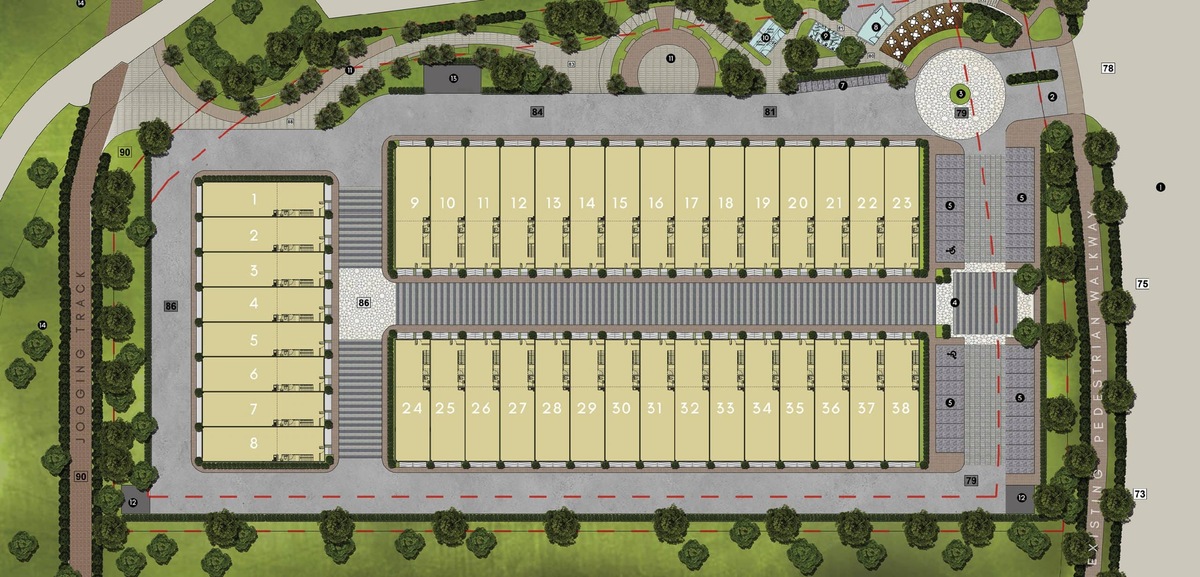



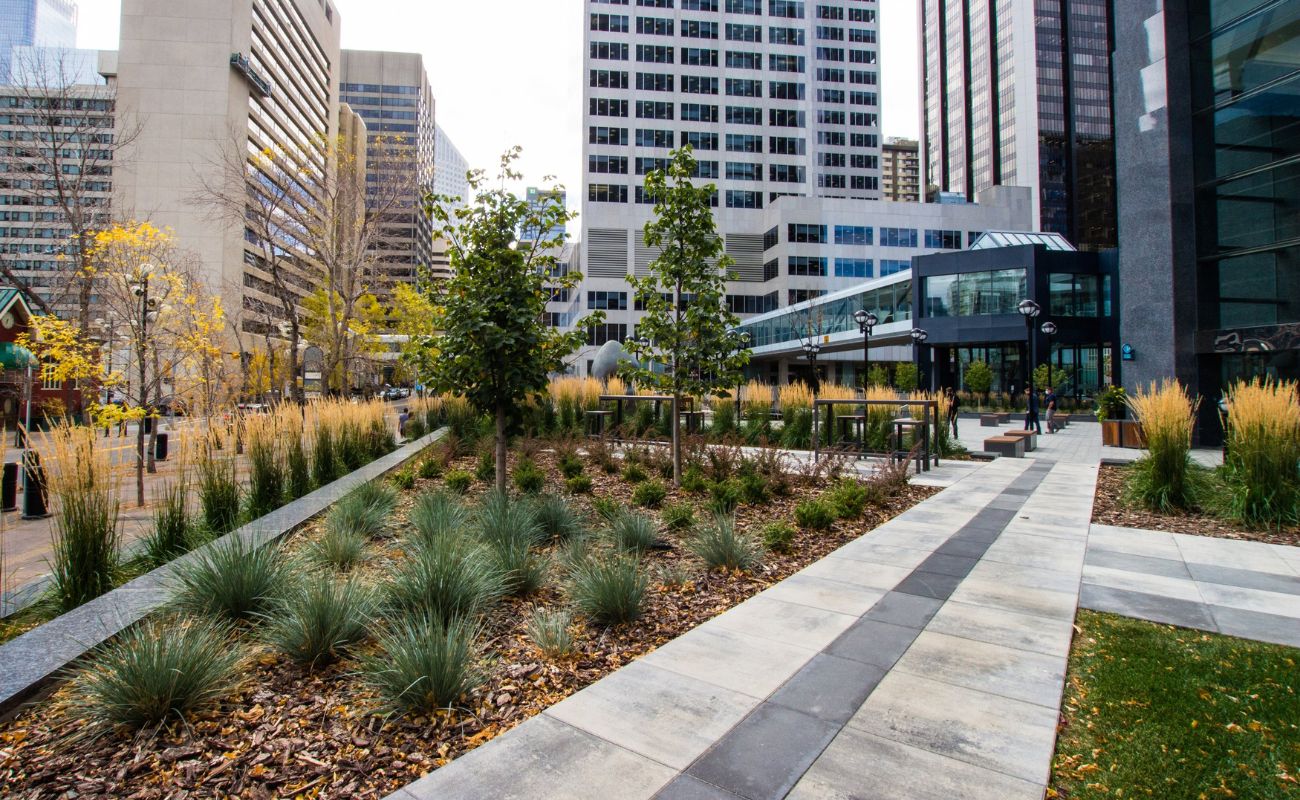
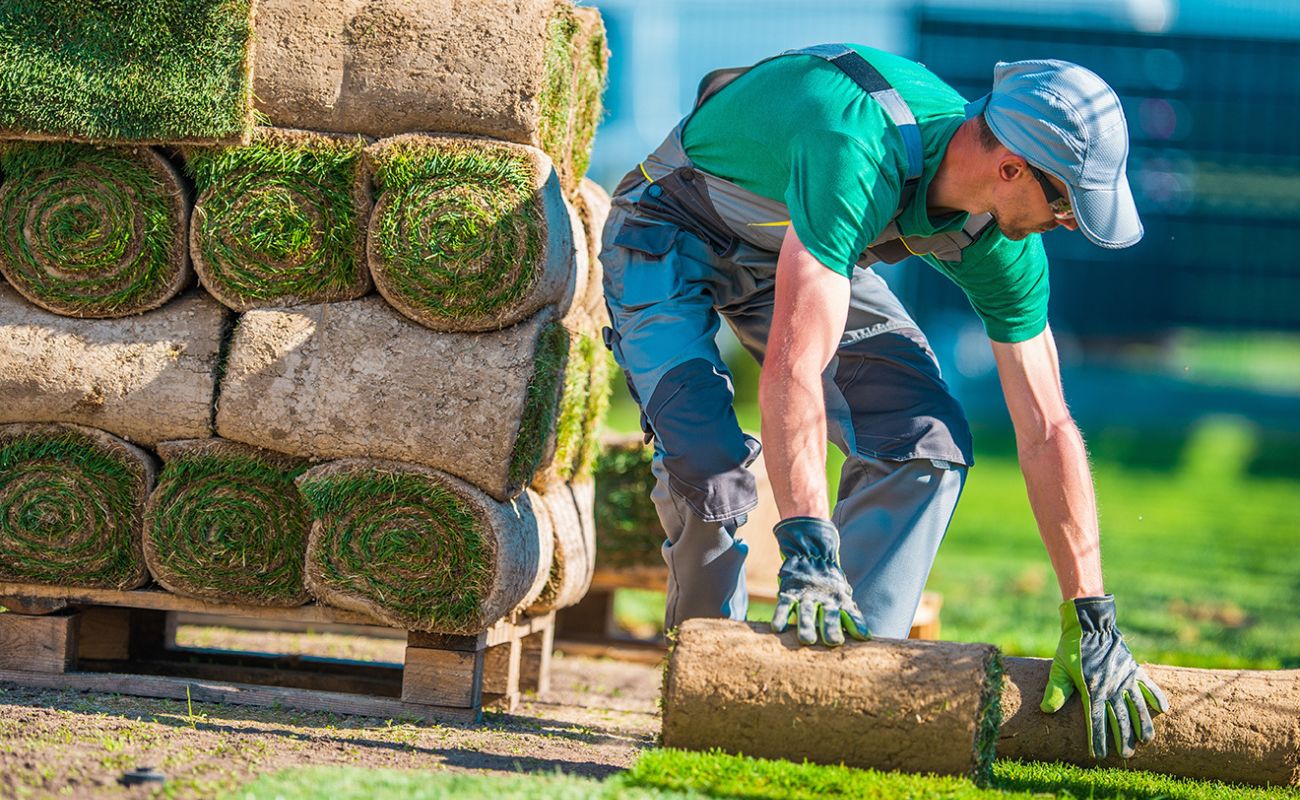
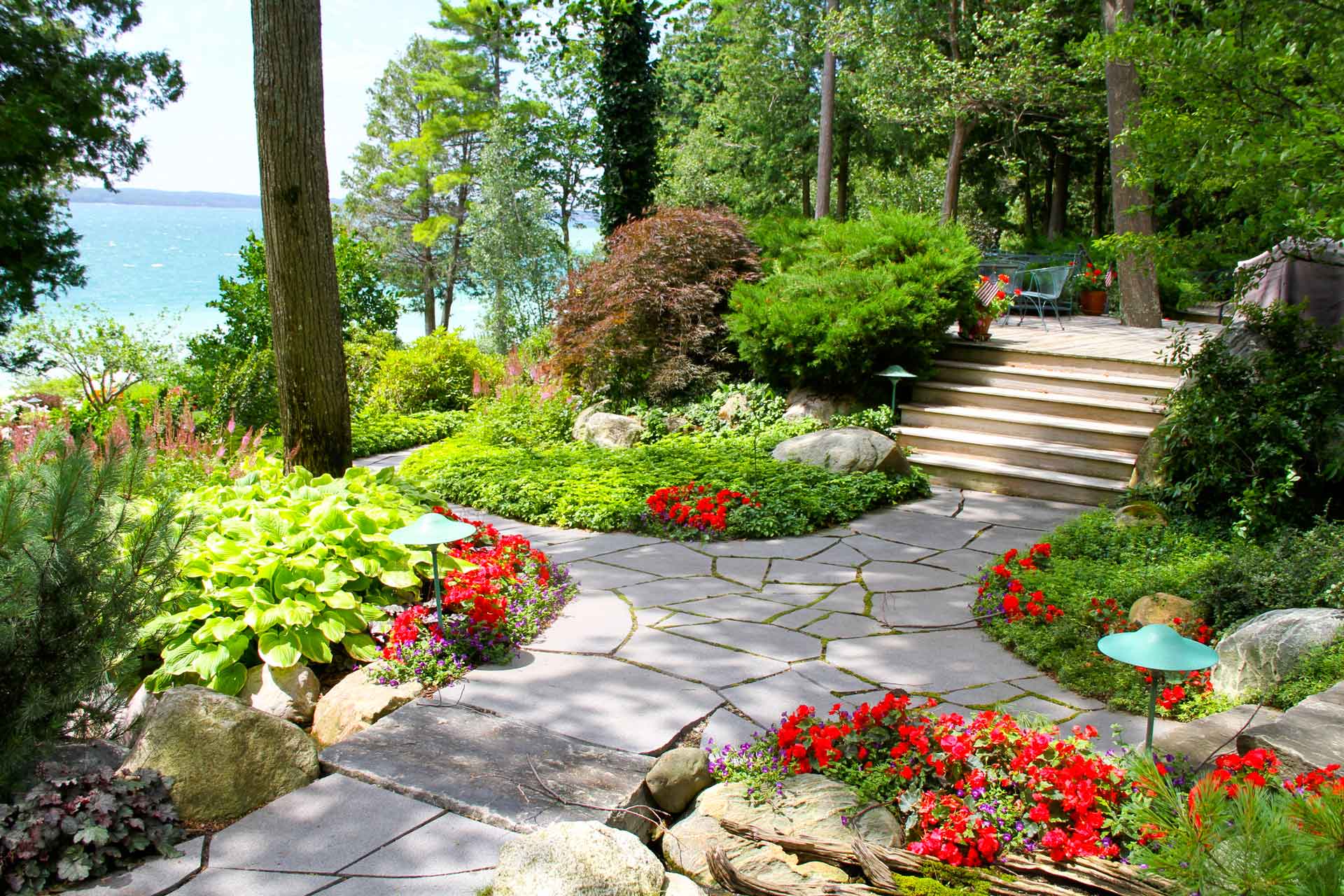
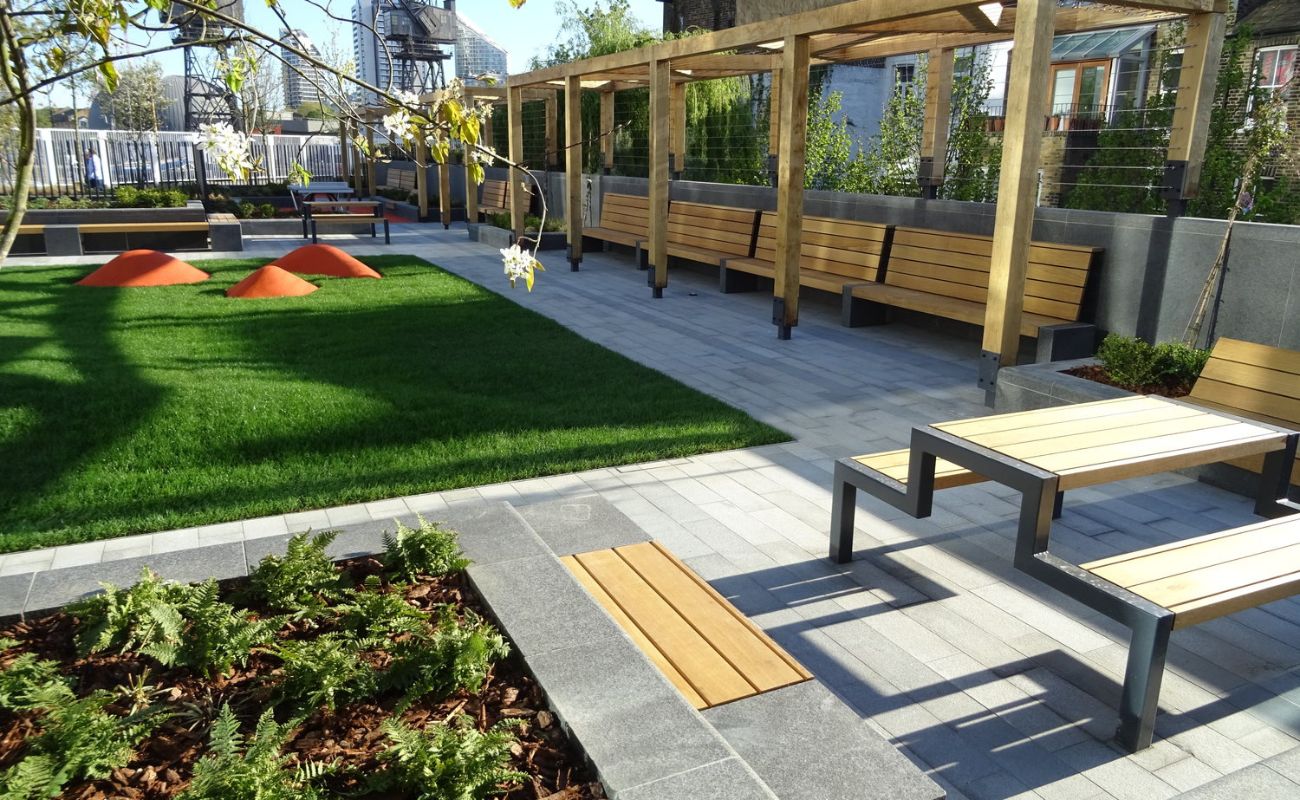
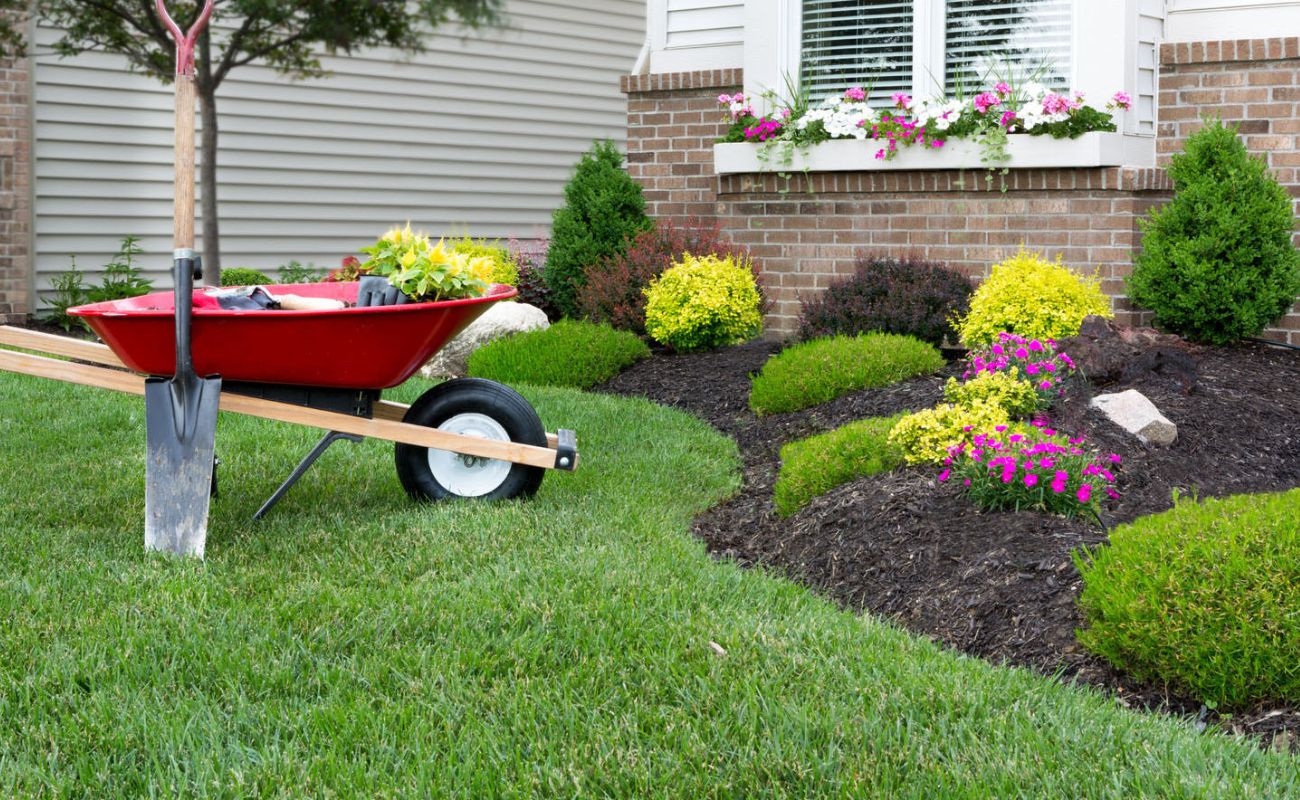


0 thoughts on “What Industry Is Landscaping In”